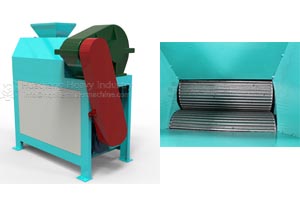
In fertilizer production, the economic analysis of double roller press granulators mainly covers equipment investment, operating costs, production efficiency, and product quality. Here's the breakdown:
1. Equipment Investment Costs
Double roller press granulators offer relatively reasonable initial investment compared to other granulation equipment. Their simple, compact structure eliminates the need for complex supporting facilities, saving substantial costs in equipment procurement. Easy installation further reduces setup expenses and shortens the installation period, enabling faster production start-up and reducing idle time for capital.
2. Operating Costs
Energy consumption: The dry granulation process requires no drying, leading to lower energy use. For example, it significantly reduces electricity and fuel costs compared to traditional high-temperature drying granulation equipment.
Maintenance costs: Maintenance stays cost-effective due to durable wear-resistant components and straightforward upkeep. Key parts like rollers made from anti-corrosion materials require less frequent replacement.

3. Production Efficiency
These double roller press granulators support high-volume production. Capacity varies by model: DZJ-Ⅰseries: 1-4 tons/hour, DZJ-Ⅱseries: 1-2.5 tons/hour.
4. Product Quality
The machines produce uniform, regularly shaped fertilizer granules, enhancing market competitiveness. High-quality products gain better market acceptance, allowing premium pricing and market share growth. Combined with lower long-term maintenance costs from durable components, this boosts overall profitability.
In summary, double roller press granulators demonstrate strong economic value in fertilizer production. They deliver tangible benefits in equipment investment, operational efficiency, and market returns, making them a cost-effective choice for manufacturers.